Long before New Zealand had record fairs and online auction houses, we had hundreds of cluttered, dark and dusty opportunity shops, affectionately known by all as “opshops”. There’s even a well-known Kiwi band named after them.
These secondhand and bric-a-brac stores often supported charities and could be found in every New Zealand suburb and town. They were plentiful – in the late 1990s Dominion Road in Auckland had a dozen or more. They still exist of course, but no longer in the same numbers, and they’re somewhat more structured and less jumbled than they once were. That’s mostly thanks to the internet, where the potential value of much of the “junk” on sale can be quickly assessed.
Prices started to creep up in the first decade of this century and have now gone into hyperdrive.
Each of these stores had (or has) a corner with at least two or three boxes of old discarded vinyl records. These days it’s as likely to be CDs although vinyl with the inevitable Nana Mouskouri, Kamahl, James Last and Seekers records still occupies a space in many.
In the last few decades of the 20th century, the stores were a magnet for both casual and more determined record collectors. Even today, and especially with the so-called vinyl revival, collectors can be found trawling through these dusty boxes looking for forgotten or hard to find records. The classic age of opshop digging seems to have gone though, especially in the bigger cities. That’s largely due to online selling and an awareness by the retailers themselves of the current value of old vinyl – especially old New Zealand records.
Prices started to creep up in the first decade of this century and have now gone into hyperdrive. Records that were a few dollars just six or seven years ago now seem to double in price every few months. Records I paid $20-$30 for a few years ago are sometimes elevated by bidding wars into hundreds or even thousands of dollars.
In part this is because of rarity: many of these records were not pressed in large numbers. But they have always been hard to find, so that’s only part of the reason.
Online histories and data on New Zealand’s musical past were either non-existent or obscure until recent years. Now bands such as The Smoke or The Human Instinct are heavily documented online, as are the collectable ace producers such as Wahanui Wynyard, who had no online presence until 2018.
Music archivists and historians such as Grant Gillanders and Andrew Schmidt have also played a very large part in exposing records that were otherwise forgotten. In particular, Gillanders’ 1960s series of New Zealand psychedelia, A Day In My Mind’s Mind, compiled across several volumes, were filled with long-forgotten, fantastic tunes that were previously unknown to many but became instantly collectable.
This is not a definitive list and prices mentioned here will almost certainly be out of date as soon as this article is published.
Peter White has been collecting since the 1980s. He has one of the definitive New Zealand record collections and suggests that other factors have come into play. “Mainstream music in the 80s and 90s was terrible. There was a core of us that loved alternative music with passion. Back then not many of us had any money but nowadays we generally have more disposable income. So, we can afford to find those really obscure pieces that most of us have never seen, let alone own.
“Also, the destruction of Christchurch saw whole collections destroyed.”
Plus, it may simply be down to fashion: “People collect vinyl, it’s the trendy thing to do.”
Some of these collectable records have been long-valued offshore while being relatively well-priced locally. Several New Zealand dealers have done very well by exporting hard-to-find classics such as Human Instinct’s Stoned Guitar and The Bluestars’ ‘Social End Product’ to European collectors. This has helped to foster global demand for records that New Zealanders were unaware of before online collecting sites such as Discogs came along. Some of these records have also been bootlegged offshore, possibly adding to the allure they have in New Zealand.
With all this in mind, AudioCulture thought it was an appropriate time to look at some of New Zealand’s more collectable records. This is not a definitive list and prices mentioned here will almost certainly be out of date as soon as this article is published. These are records that probably exist in boxes and cupboards, or out in the garage, in more than a few homes. The owner may be unaware they own something that could pay the mortgage for a week or three.
Instead of looking at the often-crazy prices paid on eBay and Discogs by international traders with deep pockets, we’ve focused on the prices they fetch in New Zealand, usually via TradeMe. Online sales there seem to command higher prices than most stores – although among collectors a couple of local brick-and-tile stores are also notorious for ambitious pricing.
--
The Human Instinct: Stoned Guitar (Pye, 1970)
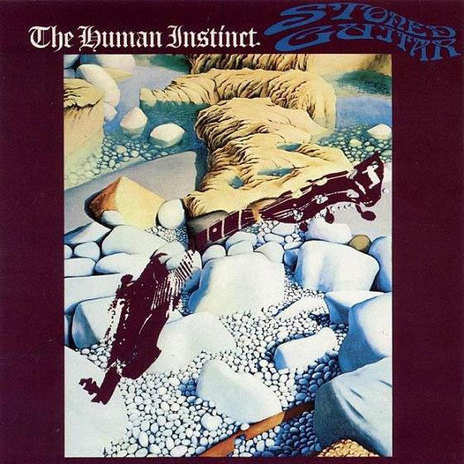
The original Stoned Guitar sleeve, adapted from a work by New Plymouth artist Michael Smither.
Virtually everything released by The Human Instinct, which started life as The Four Fours in Tauranga, has value and it seems to escalate daily. In particular, their albums with the Maurice Greer-led band which featured guitar virtuoso Billy TK. Stoned Guitar goes for higher prices, partly because it was in a flimsy sleeve that is hardly ever found intact. It rarely sells now for under $1000 – not bad for a record that retailed for $2.99 on release – but that figure is dwarfed by the 1972 album Snatmin Cuthin? which sold for $2300 on TradeMe in September 2019.
The Bluestars: ‘Social End Product’ (Allied International, 1966)
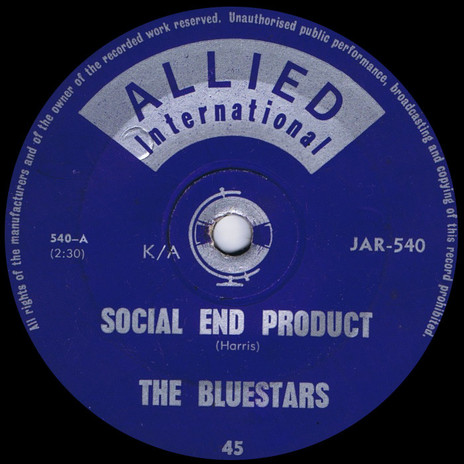
The Bluestars' classic 'Social End Product', recorded at Astor by Wahanui Wynyard in September 1966.
Bootlegged many times over the years in Europe, The Bluestars’ original New Zealand prototype punk record was once fairly easy to find in the nation’s opshops. It’s no longer easy to find, expect to pay over $3000 for a copy if you ever see it. Unless, that is, you are the lucky collector who found a copy a few months back for under $20.
Update: In June 2025, a copy sold on Discogs for US$1850, equivalent to NZ$3051.00 on the day.
The Pin Group: ‘Coat’ (Flying Nun, 1981)

The 1981 Pin Group 7-inch 'Coat' b/w 'Jim' came in at least eight different hand-screened covers.
We could fill this page with early Flying Nun releases that fetch big money, but the second single by Christchurch’s Pin Group easily holds the record, fetching $3998 on TradeMe in August 2019. It may have more than a little to do with the fact that the individual sleeves were hand-screened by Ronnie Van Hout, then a friend of the band and part of the local band scene (he is a member of Into The Void) and now a multi-media artist of trans-Tasman note based in Melbourne.
Littlejohn – Littlejohn (Polydor, 1972)

Littlejohn, Polydor, 1971.
Littlejohn’s album was essentially BLERTA in all but name, and for years it was often found in bins for a few dollars. It gradually increased in value in the 2000s, as much because of who played on it as the music it contained, compounded by the fact that, like many New Zealand albums of the time, very few were pressed. In this case, supposedly, a mere 300 left Green & Hall’s Wellington pressing plant.
Suburban Reptiles – ‘Saturday Night Stay At Home’ (Vertigo, 1978)

Suburban Reptiles - Saturday Night Stay at Home, Vertigo, 1978.
The second single by Auckland punk pioneers Suburban Reptiles goes for more than their first, the 12" ‘Megaton’, which is odd given that they sold around the same number of records (500) and the earlier disc is split into two unique editions of 250 copies. Regardless, this record’s value has accelerated lately with a TradeMe sale of $1264 in April 2019 and another TradeMe sale of $1500 in July 2020.
The PleaZers – Definitively PleaZers (Zodiac, 1967)
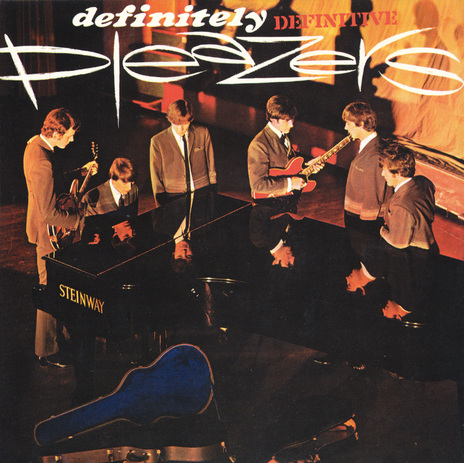
The PleaZers' sole album (Zodiac, 1967) is among the rarest, and therefore most valuable, New Zealand albums ever released.
The raucous Australian beat band brought to New Zealand by Eldred Stebbing to replace Ray Columbus and The Invaders in his stable. The PleaZers released several 45s, all of which are valuable, but their sole album release dwarfs them and was once named as the priciest New Zealand record, although other releases have now superseded that. It last sold on TradeMe in May 2018 for a sobering $2410.
Judy Bailey – My Favourite Things (CBS, 1965)
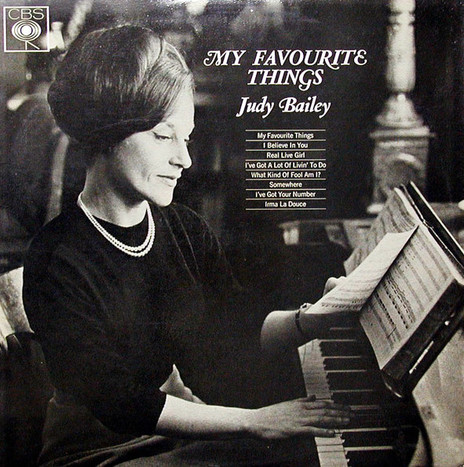
Judy Bailey - My Favourite Things, CBS, 1965.
No, not TV's mother of the nation, but the incredibly talented Auckland-born, Sydney-based jazz pianist. My Favourite Things opens with the mind-blowing title track, performed in a way that is a million miles away from the famed Coltrane take, and the album simply gets better and better after that. Bailey is in the Australian Jazz Hall of Fame, and that may be the reason this sells for thousands of dollars – if you can find it. Or it could be that it’s simply awesome. Her earlier album You, The Night & The Music (1964) fetches similar prices.
Glyn Tucker with Ian Lowe And His Tornadoes – ‘Carol’ (Zodiac, 1960)
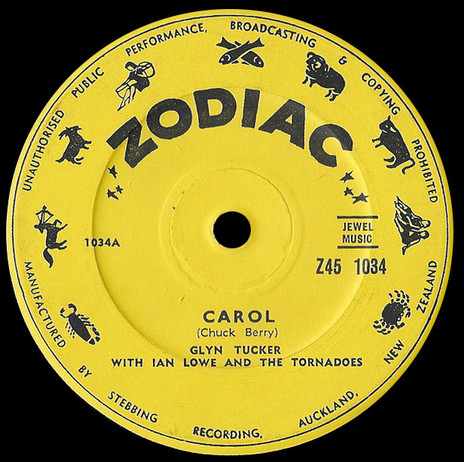
Glyn Tucker with Ian Lowe and the Tornadoes - Carol (Zodiac, 1960)
Possibly the rarest released 45 on Zodiac. Young Glyn Tucker, years before he was in The Gremlins and well over a decade before he decided to open Mandrill recording studio in Auckland, recorded this fine cover of the Chuck Berry standard with a band that included guitarists Paddy McAneney and Errol Timbers, with Bruce King on drums. The B-side was a Tucker original, although he told AudioCulture in 2014 that he was “embarrassed by ‘I’m In Love’.” Despite that, it really isn’t too bad. This is so rare it seldom turns up anywhere for sale, and the second-to-last time it did, it exceeded $800. Several 7" singles and an EP from The Gremlins fetch similar money.
Peter Lewis & Trisonic Beat – ‘Four City Rock’ (Peak, 1960)

Peter Lewis Feat. the Tri-Sonic Beat - Four City Rock (Peak, 1960)
Prototype garage rock’n’roll from Christchurch, with lyrics written by Peak Records label owner Jack Urlwin and music by Pat Nihonihoni, reportedly while in Robbins Recordings Studio. It’s impossible to say how many of these were sold, but it’s unlikely to have exceeded two or three hundred. The last time this came up on TradeMe, it was hidden in a batch of several dozen records, and I tried to bid, but a collector from Dunedin offered a substantially higher bid, so I conceded. Value: the sky is the limit, really.
Ticket – Let Sleeping Dogs Lie; Awake (Down Under, both 1972)
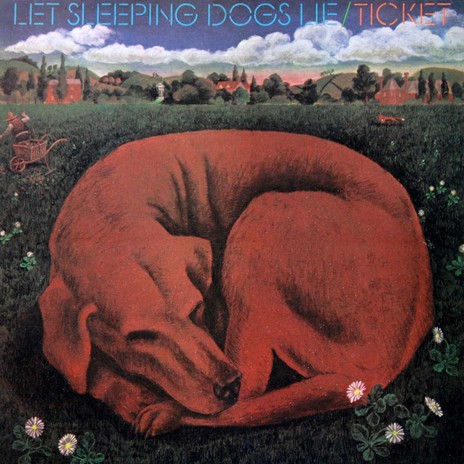
Ticket's Let Sleeping Dogs Lie (Down Under, 1972).
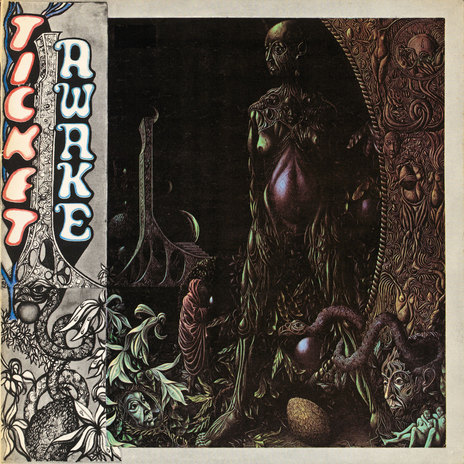
Ticket's debut album, Awake, was released in 1972. The album became the first New Zealand record released on the famed US Atlantic label.
Allegedly the loudest band in the nation at the time (their amplifier stack is pictured on their AudioCulture profile page) as well as likely the most hirsute, both albums by Ticket are rather good hard rock with a proggy edge and are packaged in great sleeves: Dogs is by Dick Frizzell, Awake by Jo Hardy. Expect to pay over $1000 for each record online.
The Breakaways – Let’s Take A Sea Cruise (HMV, 1966) and Album Two (HMV, 1967)
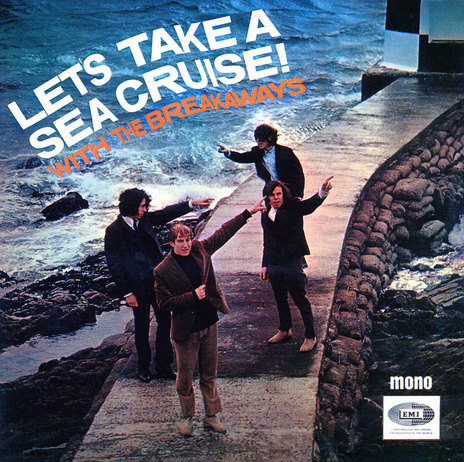
Let's Take A Sea Cruise! With The Breakaways (HMV, 1966)
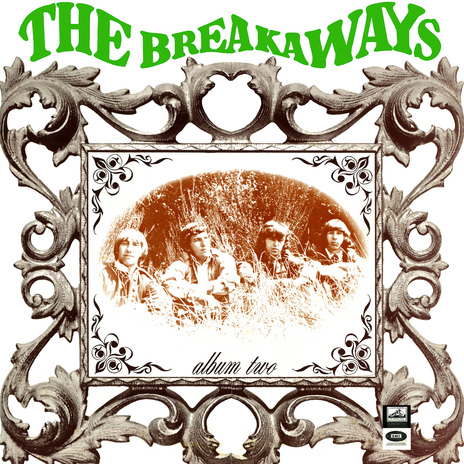
The Breakaways' second album, released in 1967 after the band had broken up. Today it's one of the hardest New Zealand albums to find on vinyl.
The Wellington-based band – famous for having Midge Marsden, Dave Orams, Dave Hurley and Doug Thomas in their lineup – recorded these two albums, both “almost” live in the HMV studio, over several sessions. They are both great, almost punk, R&B records, with the second release having the edge. Pricewise, it does too, being rarer – The Breakaways had split by the time it was released – and these days it fetches $2000 or more.
The Principals – ‘Women’ (Allied International, 1967)

The Principals - Women (Allied, 1967)
The West Auckland garage band fronted by the late Ray Morgan was engineered, like so many terrific New Zealand 45s of the mid to late 1960s, by the truly great Wahanui Wynyard at Auckland’s Astor Studio in late-evening downtime. This was the first of two singles by the group and, like many of Wyn’s productions, it is rare and uber-expensive now. These days, you’d be lucky to find it for under $800. A few years back, you could pick it up, as I did, for $15.
Mantis – Turn Onto Music (Vertigo, 1973)
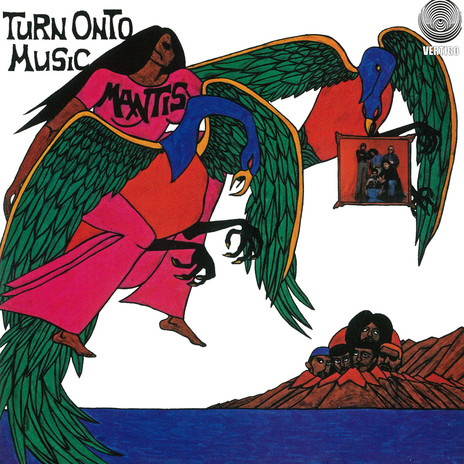
Mantis - Turn Onto Music (Vertigo/Phonogram, 1973).
From Fiji, Mantis came to New Zealand in the early 1970s, where they signed with Phonogram and recorded this one, quite amazing, South Pacific psych-rock-funk long player, produced by Edd Morris at EMI. Again, around 300 were pressed, so it’s rare for that reason, but also because it’s rather good. It’s been bootlegged at least five times and has a massive international reputation, justifiably so. The original album sells for at least $1500 online, and even a legitimate 2015 reissue hasn’t dampened that.
The Chicks – ‘Tweedle Dee’ / ‘The Rebel Kind’ (Impact, 1967)
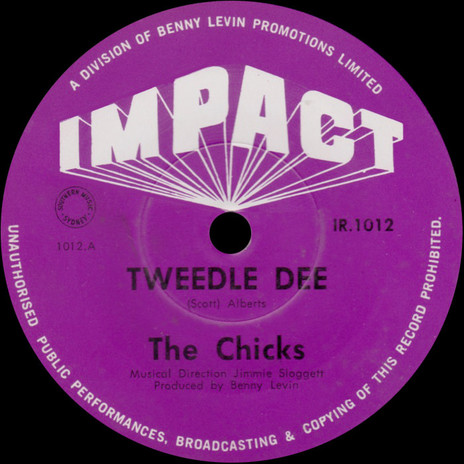
The Chicks - Tweedle Dee (Impact, 1966).
Forget ‘Tweedle Dee’, the naff A-side – disowned by The Chicks at the time – it’s the B-side that everyone wants. ‘The Rebel Kind’ is a Lee Hazlewood-penned song in which the backing band, the Mike Perjanik Group, features fuzz guitar (called ‘Stun Guitar’) performed by Doug Jerebine. Issued on Benny Levin’s Impact label, it sank without trace and sells for at least $500.
Lutha – Lutha; Earth (HMV, 1972)
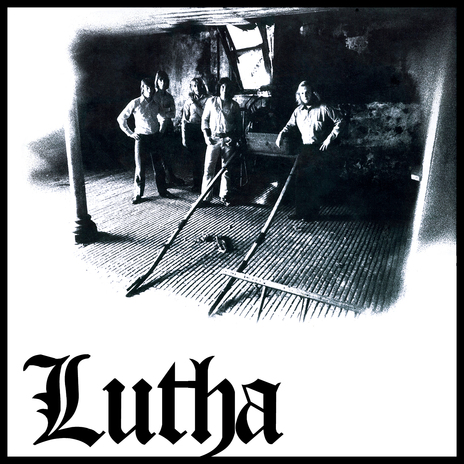
Lutha's 1972 self-titled album.

The second Lutha album, Earth, 1972
Dunedin band Lutha, combining the talents of three major local acts, signed to His Master’s Voice (NZ) Ltd in 1971 and were ushered into the studio early in 1972. Their Peter Dawkins-produced eponymous debut was quite a success, and they were back in the studio in July for the sequel (with Mike Le Petit this time, as Dawkins had moved west to Australia and bigger successes). Earth was far more “progressive” than Lutha and apparently, as a result sold fewer copies (Lutha sold at least 1000). Both are now increasingly rare, with prices in the last five years – when I bought Earth for $40 – escalating substantially. Both are listed online at the time of writing for around $1000.
**** (Four Stars)
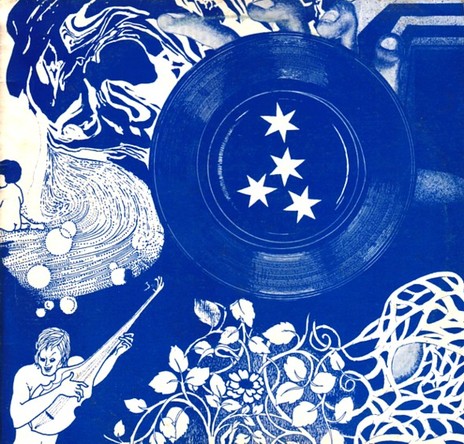
The **** (aka Four Stars) collection released by Sausage Records.
What is this incredibly rare Wellington post-punk collection – with Naked Spots Dance, Beat Rhythm Fashion, Life In The Fridge Exists and Wallsockets – worth these days? Last time it sold for $750 but because of its low pressing quantity, 250 copies, it keeps on growing in value. A copy is currently (2020) available for $830 in a Wellington store if anyone is keen.
--
One-off or small-run copies – test pressings, acetates (the fragile copies often cut in the recording studios for quality control and reference needs), private pressings and promotional copies – often go for big money, especially when the artist is deemed worthy. In June this year, a 1972 private pressing of ‘Beautiful You’ b/w ‘Hard Times’ by the almost totally unknown Petone band Blitz St Fuzz sold on TradeMe for $2527, with three collectors battling it out at the end.

Blitz St Fuzz - 'Beautiful You' b/w 'Hard Times' (Sonic Recordings, 1972)
These are just some of the records fetching big money, and in many cases, more, on every sale. To this you could add easily discs by Taylor, Farmyard, Butler, early Split Ends 45s, The Underdogs, Space Farm, The Smoke, Max Merritt, Dragon, 25c, Tamburlaine, Chants R&B, Selected Few, Dr. Tree, Herco Pilots, Proud Scum, Serenity, The Henchmen, This Kind Of Punishment and much of the grittier end of the Zodiac catalogue. Ironically, there are still singles on that label, plus Viking and other 60s and 70s indies, that you can pick up for $10-$15, including ‘She’s a Mod’ and other Invaders records, in part because they sold so many copies on release.
Prices always depend on what people will pay, and there is clearly an extremely limited market for an old 7" 45 retailing for $2000. Prices have, in recent times, been forced up by a few collectors determined to collect every supposedly rare New Zealand record. Once their demand is satisfied, there is a possibility that these prices will level off or drop, as not many collectors can afford some of these astronomical price tags.
Oddly, of far lower value, despite the fuss created occasionally by the media, are the glorious 10" 78s released by Australian Parlophone and Columbia and sold with Māori themed labels and sleeves, Similarly, most Tanza and early Zodiac 78s are worth just a few dollars, tops.
Then there are the nation’s opshops: they still exist and are still turning up solid-gold discoveries weekly for determined crate diggers.
--
Listen to Simon Grigg discussing rare New Zealand records, bFM, 28 April 2021.